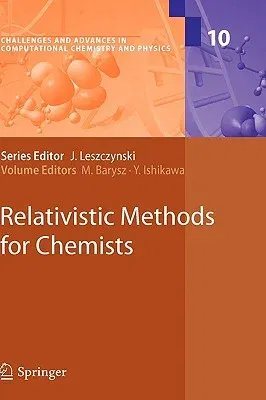Relativistic Methods for ChemistsHardcover, 30 April 2010

Qty
1
Turbo
Ships in 2 - 3 days
In Stock
Free Delivery
Cash on Delivery
15 Days
Free Returns
Secure Checkout

Part of Series
Challenges and Advances in Computational Chemistry and Physi
Part of Series
Challenges and Advances in Computational Chemistry and Physics
Print Length
613 pages
Language
English
Publisher
Springer
Date Published
30 Apr 2010
ISBN-10
1402099746
ISBN-13
9781402099748
Description
Product Details
Book Format:
Hardcover
Country of Origin:
NL
Date Published:
30 April 2010
Dimensions:
23.39 x
15.6 x
3.33 cm
ISBN-10:
1402099746
ISBN-13:
9781402099748
Language:
English
Location:
Dordrecht
Pages:
613
Publisher:
Series:
Weight:
1047.8 gm